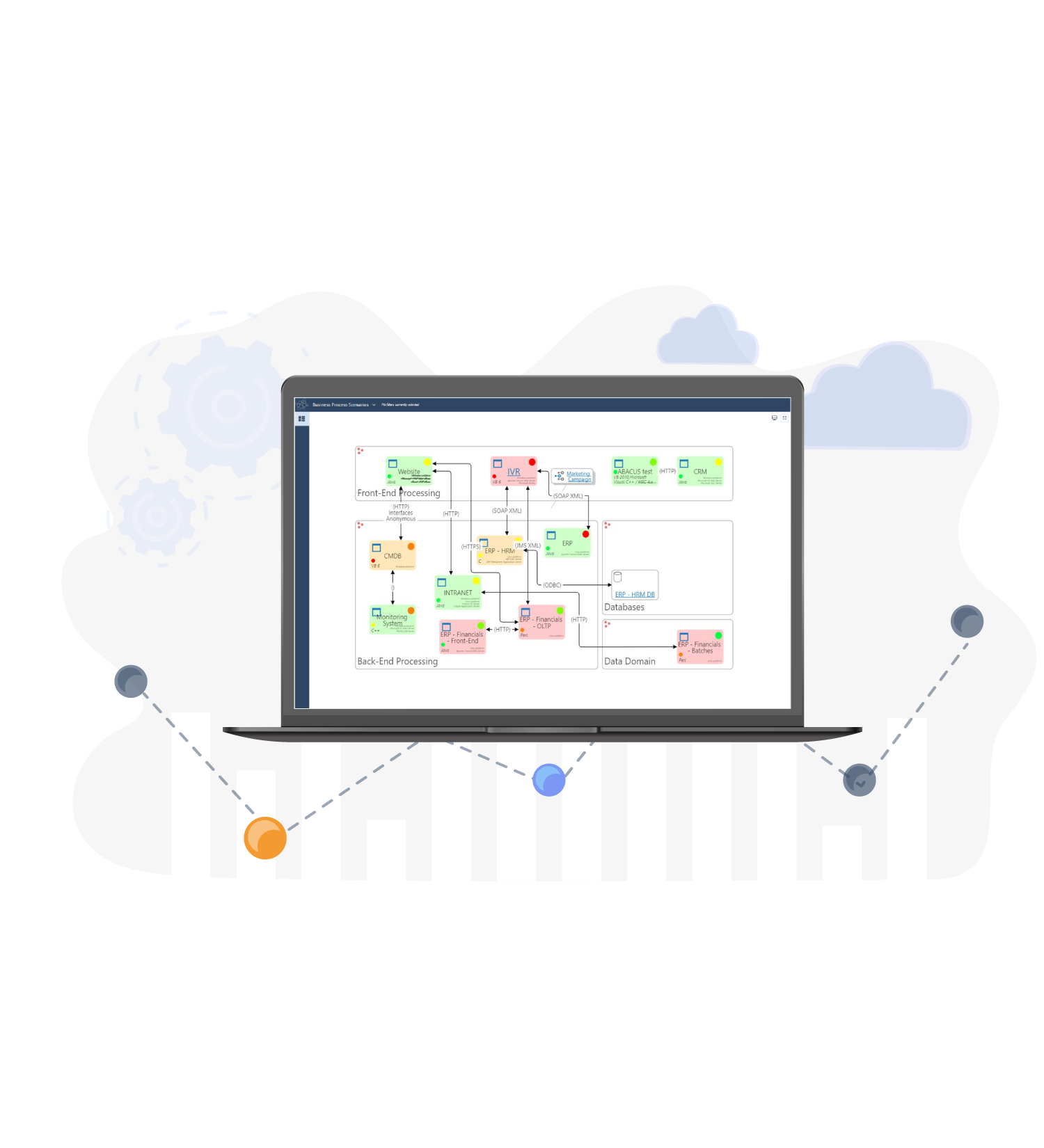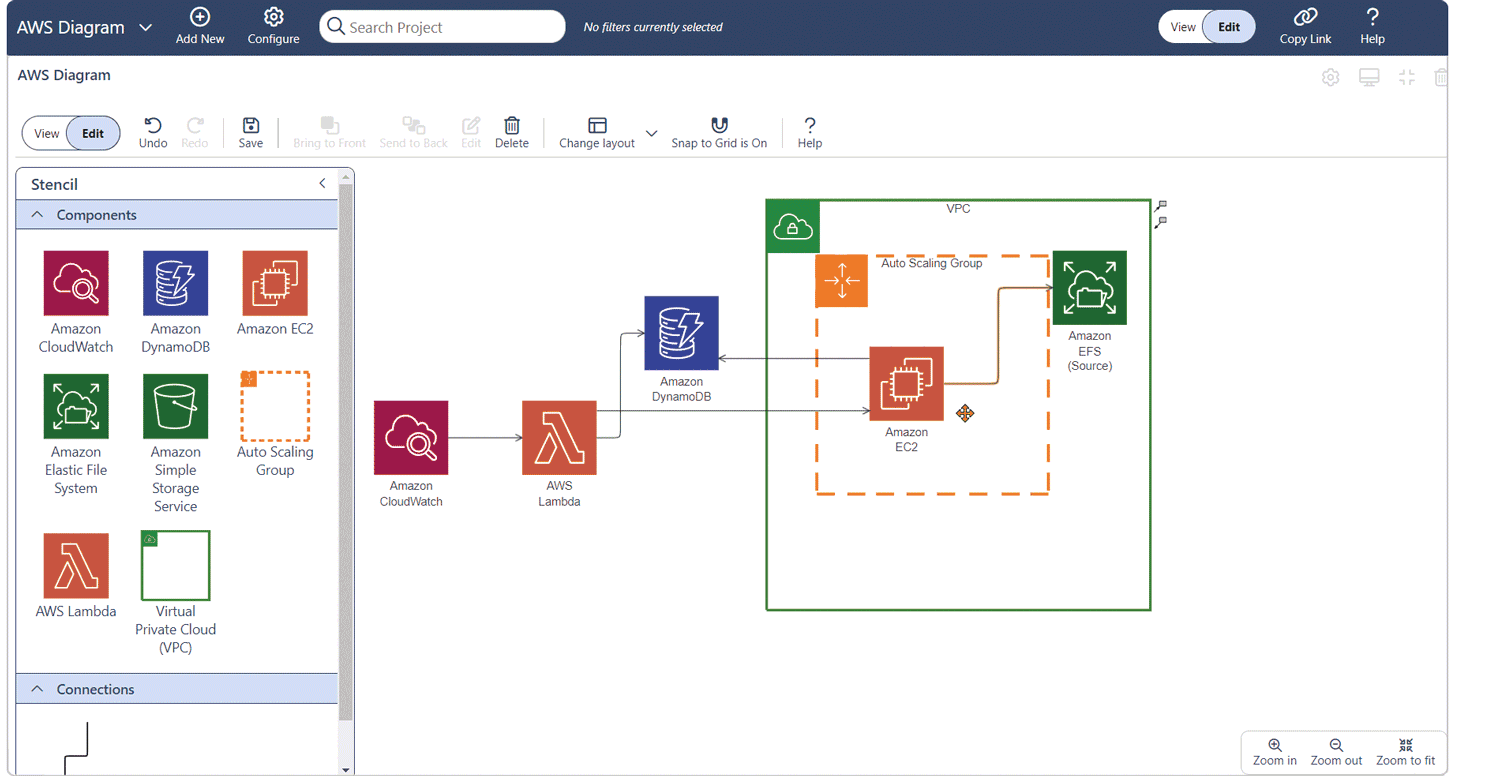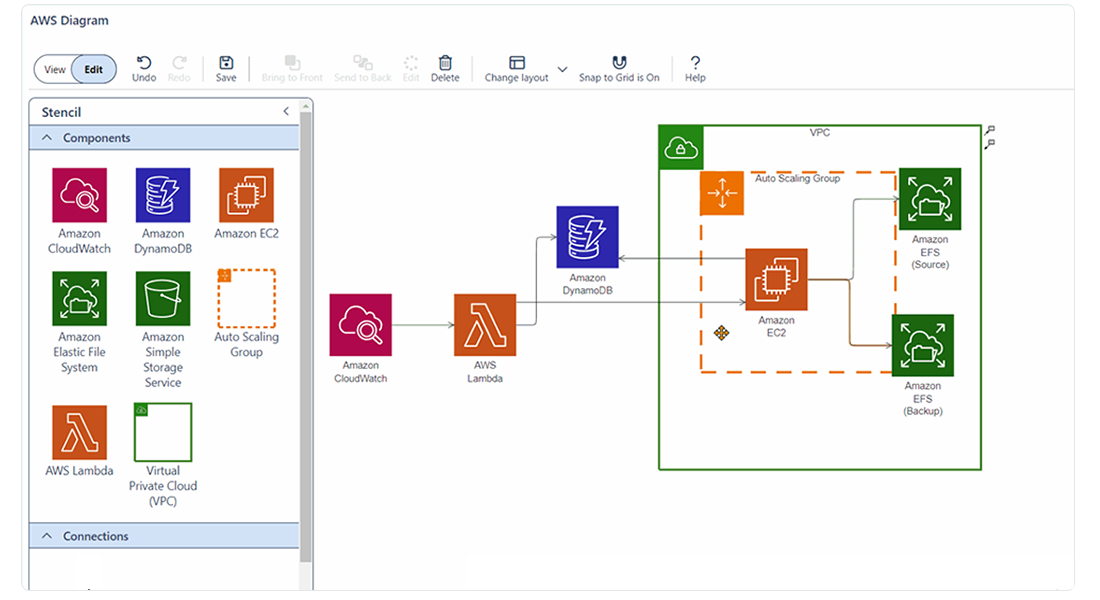Collaborating on Architecture Modeling & Data
By pulling together a connected view of business processes, applications, platforms and technology, architects can design strong solutions. Use industry standard frameworks and modeling techniques and present plans using a range of viewpoints, roadmaps, charts and diagrams.

Modeling & Diagramming Solution Architectures
Take advantage of major solution, system and software modeling approaches available within ABACUS
- Scope requirements and system specifications
- Map out design concepts and target architectures
- Use AWS, Azure, and other shapes libraries and standards
- Assess options, run analytics and scenario analysis
- Collaborate on online models and diagrams: solution architects and other architects or analysts can build or edit diagrams using drag-and-drop stencils with your chosen icons and notations
- Send links to diagrams or dashboards for quick editing or review
- Motivate decision-makers with clear presentations about Process Improvements, Cost-Savings, Roadmaps and Growth
Solution Architecture Templates
Make the most of our Solution Architecture frameworks and notations available pre-built in ABACUS:
- AWS and Azure shapes libraries
- The Unified Modeling Language (UML)
- Systems Modeling Language (SysML)
- C4 Model for Software Architecture
- Business Process Modeling Notations (BPMN)
- Model-Driven Architecture (MDA)
- TOGAF and ArchiMate
- Business Capability Modeling

Shapes, graphics and icons in ABACUS diagrams can also be customized. New shapes can be added to your shapes library for use in diagrams and easily converted from Visio. ABACUS is also set up for architects who need to use multiple modeling languages or design their own.
Streamline Your Solution Architecture Modeling
Explore key solution architecture skills, plus examples of solution designs and templates in our Solution Architecture eBook.


